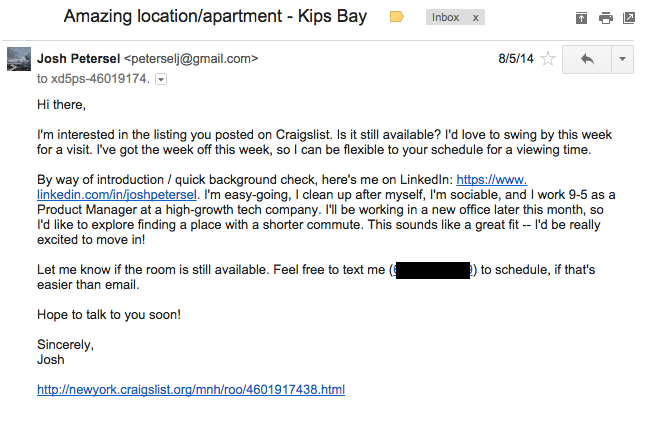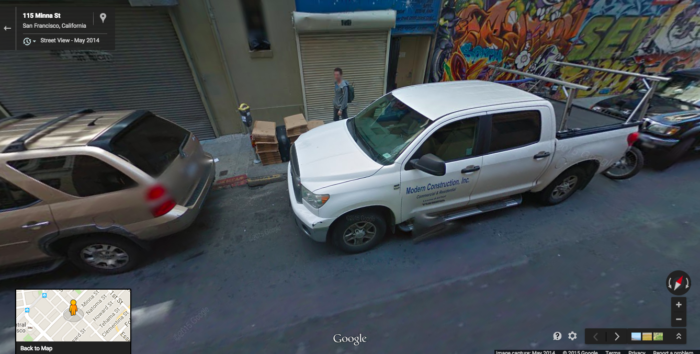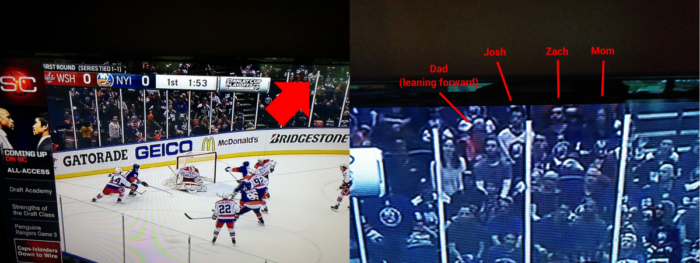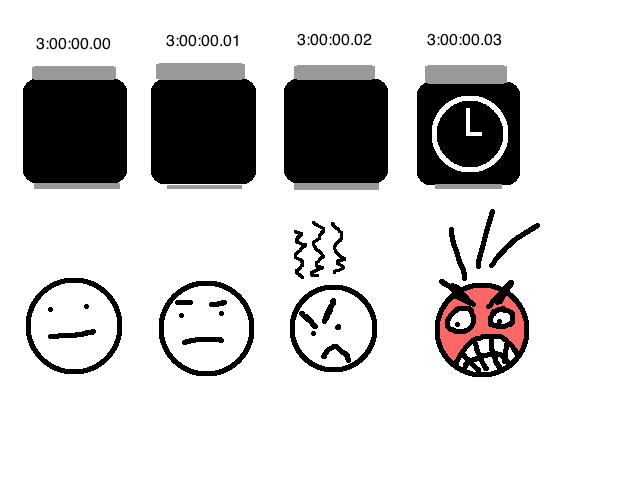- Go on Craigslist and find a temporary place in an okay location. It’s going to be infinitely easier to do actual apartment hunting if you’re physically based in New York and you have the logistical potential to visit the listings you read about. This temp place is probably going to be awful, but you can put up with awful for 4 weeks. My entry apartment in New York was a studio apartment which had four people living in it full-time. Three of them had consistent sleepover girlfriends. I slept in a bunk bed with soundproof walls and ear plugs. One guy slept in a hammock, one guy on a foam mat which he unrolled from the broom closet. Your entry apartment will not be this awful… I think.
- Your listings venue of choice is Padmapper.com. It’s like Craigslist, but with infinitely better sorting tools. For starters, narrow your view by geography and by price per bed.
- Your objective is to find a room 2- or 3-bedroom apartment where the other rooms are already filled and there’s an empty room because of a roommate moving out. This way, you likely actually avoid the broker’s fees, and possibly get rent that’s way under market because the lease & terms have been passed down a few generations. Click everything in your area, hide the listings that are terrible, and employ steps 4 & 5 for what remains.
- Draft your form email, which will look something like this:

This form email has six key elements in some form:- Your Linkedin profile, which is an easy way to reassure the lister that you’re a decent human being
- Proper grammar and punctuation, which is an easy way to reassure the lister that you’re a decent human being
- Some indication that you have an income and a life, which is yeah yeah you get it
- As applicable, a few details from the listing (does the lister mention her name? some key personal interests?) to reassure the lister that you’re not a robot or that you’re not blatantly spamming everyone even though you kind of are
- Some proposed time slots where you could come visit the apartment so that you can get down to business quickly (Above, I had an entire week free. You might only have 5-7 after work)
- A link to the listing in question so that when you’re reviewing the responses to the mass of form emails you send out, you can quickly figure out which listing you’re referring to
- Send your form email to literally any apartment that looks decent. Make this part of the process brainless. If it looks questionable, send anyway. It costs nothing to pretty much copy/paste an email. It’s easier to decide on whether you want to live in a place after you’ve actually visited and after you’ve actually engaged with the lister.
With this method, you can probably comfortably churn through 20-30 decent outbound form emails in a sitting, and set up 5-6 apartment visits in a week.
Unfortunately, Craigslist scams are still a pretty real thing. Some things to be wary of when you’re searching through Craigslist apartments:
- Unreasonably good deals. If you’re seeing a 1-bedroom for $750, and the next-cheapest apartment in the area is like $900 per room in a 5-bedroom compound… there’s probably a problem, catch, or scam
- No pictures. It’s not hard to take some photos with your cell phone. Only reasons I can think of someone not having photos are a) the photos would reveal a pretty meaningful problem, b) it’s a scam, or c) it’s a little old lady who doesn’t have a smart phone or doesn’t really know any better. Maybe you’re lucky and the lister is a (C), but probably not
- Age of listing. NYC housing moves fast. A listing up for > 10 days is pretty unusual. Maybe there’s a good reason — the lister had to go on an emergency trip, or an applicant flaked out. Maybe it’s just a scam. In the same vein, you might check for duplicate listings by copy/pasting a few keywords into the Craigslist search bar. Often for bad apartments you’ll find multiple listings with slightly different titles but the same body copy
- Fees and forms (before viewing). Some places will ask you to fill out rental forms and pay broker fees. Unfortunately, the NYC housing market sucks and is riddled with shady practices like that. You may wind up having to pay a broker fee; that’s okay. You should never fill out forms or fees before getting to at least see the place, though
Key questions I’d consider asking during a visit which actually make a difference:
- Is laundry in the building?
- Do the A/C and heat work?
- How’s the water pressure in the shower?
- (If furniture present) Which items are staying, going?
- Are there broker’s fees, security, deposits, other bullshit?
For apartments with roommates:
- What is your cleaning schedule for common space?
- How often do you have friends over?
- Do you have a serious significant other? How often do they come over?
- How often do you cook?
Up to you to seal the deal from there.
If you want to read about the worst parts of NY apartment hunting, check out “I’m moving to New York City; how do I get a decent apartment?” — An Adventure in Misery









